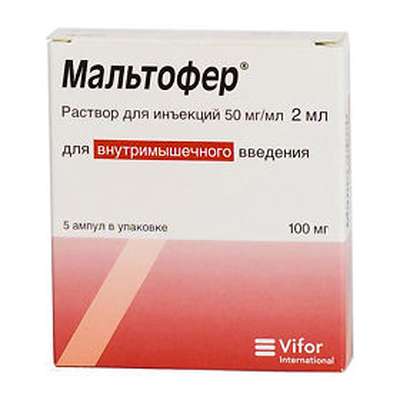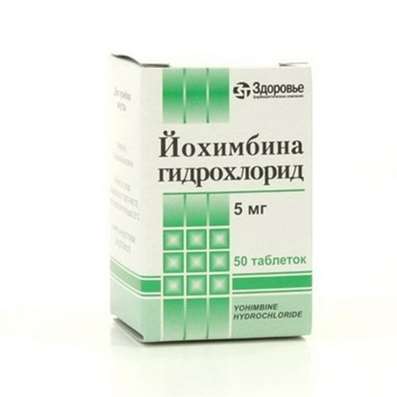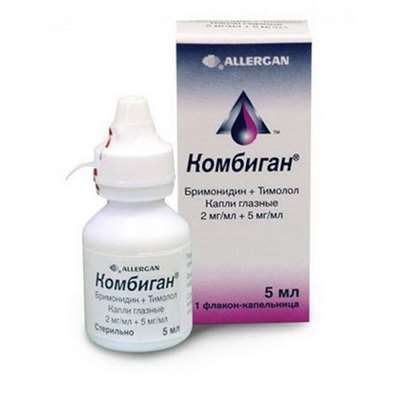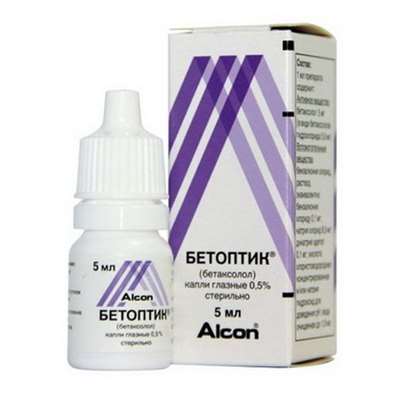Instruction for use: Ibuprofen + Pitofenone + Fenpiverinium bromide (Ibuprophenum+ Pitophenonum+ Phenpiverinii bromidum)
I want this, give me price
Pharmacological group
NSAIDs - Propionic acid derivatives in combinations
Nosological classification (ICD-10)
K59.8.1 * intestines Dyskinesia
Pain smooth muscle spasm, Pain spasm of smooth muscles (renal and biliary colic, intestinal spasms, dysmenorrhea), Pain spasm of smooth muscles of internal organs, Pain spasm of smooth muscles of internal organs (kidney and biliary colic, intestinal spasms, dysmenorrhea), intestinal hypomotility, Hypotonic dyskinesia of the colon, GIT Dyskinesia, Dyskinesia gastrointestinal atony with events,colon Dyskinesia,Gastrointestinal spasm, Intestinal colic, Colic in infants, Spastic bowel dyskinesia, Spastic colon dyskinesia, Baby colic
K82.8.0 * Dyskinesia of the gallbladder and biliary tract
Biliary obstruction, Biliary reflux gastritis, Biliary reflux esophagitis, biliary sludge, Pain smooth muscle spasm, Pain spasm of smooth muscles (renal and biliary colic, intestinal spasms, dysmenorrhea), Pain spasm of smooth muscles of internal organs, Pain spasm of smooth muscles of internal organs (kidney and biliary colic, intestinal spasms, dysmenorrhea), Gipermotornaya biliary dyskinesia, Hypokinesia of the gall bladder, Hypokinetic dyskinesia of the gallbladder, Biliary dyskinesia, Dyskinesia of the gallbladder,Dyskinesia of biliary tract, biliary colic, Bile reflux,Violation of bile secretion, Violation of the outflow of bile, Subacute and chronic diseases of the biliary tract, The spasm of the biliary tract, Biliary tract spasm, Spastic biliary dyskinesia, Spasmodic dyskinesia of the gallbladder, Spastic condition of the gastrointestinal tract
M25.5 Pain in the joint
Arthralgia, Pain syndrome in musculo-articular diseases, Pain syndrome in osteoarthritis, Pain syndrome in osteoarthritis, Pain syndrome in acute inflammatory diseases of the musculoskeletal system, Pain syndrome in chronic inflammatory diseases of the musculoskeletal system, Pain in the joints, Soreness of the joints, Soreness of joints in severe physical exertion, Painful inflammatory joint damage, Painful conditions of the musculoskeletal system, Painful joint conditions, Painful traumatic affection of joints, Pain in the musculoskeletal system, Pain in Shoulder Joints, Pain in the joints, Joint pain, Joint pain with injuries, Musculoskeletal pain, Pain with osteoarthritis, Pain in the pathology of the joints, Pain in rheumatoid arthritis, Pain in chronic degenerative bone diseases, Pain in chronic degenerative joint diseases, Bone-joint pain, Joint pain, Arthritic pain of rheumatic origin, Articular pain syndrome, Joint pain, Rheumatic pain, Rheumatic pains
M54.3 Sciatica
Ishialgia, Neuralgia of the sciatic nerve, Sciatic neuritis
M54.4 Lumbago with sciatica
M79.1 Myalgia
Myofascial pain syndromes ,Pain syndrome in musculo-articular diseases, Pain syndrome in chronic inflammatory diseases of the musculoskeletal system, Pain in the muscles, Tenderness of muscles, Muscular soreness in severe physical exertion, Painful conditions of the musculoskeletal system, Pain in the musculoskeletal system, Pain in the muscles, Pain at rest, Muscle aches, Muscle pain, Musculoskeletal pain, Myalgia, Muscle pain, Muscle pain at rest, Muscle pain, Muscular pain of non-rheumatic origin, Muscle pain of rheumatic origin, Acute muscle pain, Rheumatic pain, Rheumatic pains, Myofascial syndrome, Fibromyalgia
M79.2 Neurology and neuritis, unspecified
Pain syndrome with neuralgia, Brachialgia, Occipital and intercostal neuralgia, Neuralgia, Neuralgic pain, Neuralgia, Neuralgia of intercostal nerves,Neuralgia of the posterior tibial nerve, Neuritis, Neuritis traumatic, Neuritis, Neurological Pain Syndromes, Neurological contractures with spasms, Acute neuritis, Peripheral neuritis,Post-traumatic neuralgia,Severe pain of a neurogenic nature, Chronic neuritis, Essential neuralgia
N23 Renal colic unspecified
Pain in renal colic, Pain smooth muscle spasm, Pain spasm of smooth muscles (renal and biliary colic, intestinal spasms, dysmenorrhea), Pain spasm of smooth muscles of internal organs, Pain spasm of smooth muscles of internal organs (kidney and biliary colic, intestinal spasms, dysmenorrhea), renal Colic, ureteral colic, Renal colic, Renal colic with urolithiasis, Kidney disease, Spasm of smooth muscle in diseases of the urinary system, The spasm of the urinary tract, The spasm of the ureter, The spasm of the ureters, Spasms of the urinary tract, Spasms of the urinary tract
N94.6 Dysmenorrhea Unspecified
Pain during menstruation, Functional disorders of the menstrual cycle, Menstrual cramps, Emmeniopathy, Pain during menstruation, Painful menstrual irregularities, algomenorrhea, algomenoreya, Pain smooth muscle spasm, Pain spasm of smooth muscles (renal and biliary colic, intestinal spasms, dysmenorrhea), Pain spasm of smooth muscles of internal organs (kidney and biliary colic, intestinal spasms, dysmenorrhea), Disalgomenoreya, dysmenorrhea, Dysmenorrhea (essential) (Exfoliative), menstrual disorder, menstruation painful, metrorrhagia, Violation of the menstrual cycle, Menstrual irregularities, Prolaktinzavisimoe menstrual disorders, Prolaktinzavisimoe menstrual dysfunction, Pain spasm of smooth muscles of internal organs, Spasmodic dysmenorrhea, Primary disalgomenoreya
R51 Headache
Pain in the head, Cephalgia, Pain with sinusitis, Pain in the back of the head, Painful headache, Headache of vasomotor genesis, Headache of vasomotor origin, Headache with vasomotor disorders, Headache, Neurological headache, Serial headache
R52.2 Other constant pain
Pain syndrome, rheumatic origin, Pain at vertebral lesions, Pain in the chamber, Pain for burns, Pain syndrome weak or moderate, Perioperative pain,Moderate to severe pain, Moderately or weakly expressed pain syndrome, Moderate to severe pain, Ear pain of otitis, Neuropathic pain, neuropathic pain
R52.9 Unspecified Pain
Pain after cholecystectomy, Pain shooting, Non-malignant pain, Obstetric and gynecological pain, Pain syndrome, Pain in the postoperative period, Pain in the postoperative period after orthopedic surgery, Pain of inflammatory genesis, Pain than cancer genesis, Pain syndrome after diagnostic procedures, Pain after surgery Diagnostic, Pain after surgery, Pain after orthopedic surgery, Pain after injuries, Pain after the removal of hemorrhoids, Pain at the non-rheumatic inflammation of nature, Pain in inflammatory lesions of the peripheral nervous system, Pain in diabetic neuropathy, Pain in acute inflammatory diseases of the musculoskeletal system, Pain when the tendon pathology, Pain smooth muscle spasm, Pain spasm of smooth muscles (renal and biliary colic, intestinal spasms, dysmenorrhea), Pain spasm of smooth muscles of internal organs, Pain spasm of smooth muscles of internal organs (kidney and biliary colic, intestinal spasms, dysmenorrhea), Pain in trauma syndrome, Pain with injuries and after surgical interventions, Pain in chronic inflammatory diseases of the musculoskeletal system, Pain with duodenal ulcer, Pain syndrome in gastric ulcer, Pain syndrome in gastric ulcer and duodenal ulcer, pain, Pain during menstruation, pain syndromes, painful condition, Painful foot fatigue, Sore gums when wearing dentures, Soreness of the cranial nerves exit points, Painful menstrual irregularities, Painful dressings, Painful muscle spasm, Painful teeth growth, Melosalgia, Pain in the area of the surgical wound, Pain in the postoperative period, Pain in the body, Pain after diagnostic procedures, Pain after orthopedic surgery, Pain after surgery, The pains of the flu, Pain in diabetic polyneuropathy, Pain for burns, Pain during sexual intercourse, Pain during diagnostic procedures, Pain during therapeutic procedures, for colds Pain, Pain in sinusitis, Pain in trauma, Pain traumatic, The pain in the postoperative period, Pain after diagnostic procedures, The pain after sclerotherapy, Pain after surgery, postoperative Pain, Pain postoperative and posttraumatic, posttraumatic pain, Pain when swallowing, Pain in infectious and inflammatory diseases of the upper respiratory tract, The pain of burns, The pain in traumatic muscle injury, Pain in trauma, The pain of tooth extraction, The pain of traumatic origin, Pain caused by spasm of smooth muscles, Expressed pain syndrome, Expressed pain syndrome, traumatic origin, Postoperative pain, Post-traumatic pain, Post-traumatic pain syndrome, Torpid pain, Traumatic pain, Traumatic pain, Mild pain, Moderately severe pain, Moderate pain, Polyarthralgia with polymyositis
Characteristics of Ibuprofen + Pitophenone + Fentpiverinia bromide
Combined analgesic and antispasmodic.
Pharmacology
Pharmacological action - anti-inflammatory, analgesic, spasmolytic.
Pharmacodynamics
Suppress synthesis of PG. The combination includes ibuprofen (NSAIDs), pitophenone (in the form of hydrochloride, myotropic antispasmodic) and fenpiverinia bromide (m-cholinoblocking agent of central and peripheral action).
Ibuprofen is a derivative of phenylpropionic acid. Has analgesic, anti-inflammatory and antipyretic effect. The main mechanism of action is oppression of biosynthesis of PG modulators of pain sensitivity, thermoregulation and inflammation in the central nervous system and peripheral tissues. In women with primary dysmenorrhea, the elevated GH level in myometrium reduces, thereby reducing intrauterine pressure and the rate of uterine contractions.
Pitophenone, like papaverine, has a direct myotropic effect on the smooth muscles of the internal organs and causes it to relax.
Fentiverinia bromide due to m-cholinoblocking action has an additional relaxing effect on smooth muscles.
The combination of the three components of the combination leads to a mutual enhancement of their pharmacological action.
Pharmacokinetics
Components of the combination ibuprofen + pitofenon + fenpiverinia bromide are well absorbed in the digestive tract. Cmax is achieved approximately 1-2 hours after application. The main component of the combination - ibuprofen - binds to blood plasma proteins by 99%, can accumulate in the synovial fluid, is metabolized in the liver and is excreted 90% with urine in the form of metabolites, incl. conjugates. A small part is excreted with bile. T1 / 2 from plasma is 2 hours.
Application of Ibuprofen + Pitophenone + Fentpiperinium bromide
Weak and moderately severe pain syndrome with spasms of smooth muscles of internal organs - renal and biliary colic, dyskinesia of bile ducts, intestinal colic; gynecological diseases (dysmenorrhea); headache, incl. migraine nature; short-term symptomatic treatment for pain in the joints, neuralgia, ischialgia, myalgia.
Contraindications
Hypersensitivity; erosive and ulcerative changes in the mucous membrane of the stomach or duodenum; active gastrointestinal bleeding; Inflammatory bowel disease in the phase of exacerbation, incl. ulcerative colitis; anamnestic data on the occurrence of bronchial obstruction, rhinitis, urticaria after taking acetylsalicylic acid or other NSAIDs (complete or incomplete acetylsalicylic acid intolerance syndrome - rhinosinusitis, urticaria, polyps of the nasal mucosa, bronchial asthma); hepatic insufficiency or active liver disease; renal failure (Cl creatinine <30 mL / min); progressive kidney disease; confirmed hyperkalemia; Hemophilia and other disorders of blood clotting, incl. hypocoagulation; hemorrhagic diathesis; period after aorto-coronary bypass surgery; acute intermittent porphyria; granulocytopenia; disorders of hematopoiesis; deficiency of glucose-6-phosphate dehydrogenase; tachyarrhythmia; angle-closure glaucoma; diseases of the optic nerve; hyperplasia of the prostate; intestinal obstruction; pregnancy and the period of breastfeeding; age to 16 years.
Restrictions for use
Elderly age; congestive heart failure; cerebrovascular diseases; arterial hypertension; IHD; dyslipidemia / hyperlipidemia; diabetes; diseases of peripheral arteries; nephrotic syndrome; Cl creatinine <30-60 ml / min; hyperbilirubinemia; peptic ulcer of the stomach and duodenum (in the anamnesis); presence of Helicobacter pylori infection; gastritis; enteritis; colitis; long-term use of NSAIDs; blood diseases of unclear etiology (leukopenia, anemia); smoking; frequent use of alcohol (alcoholism); severe physical illness; concomitant therapy with anticoagulants (eg warfarin), antiplatelet agents (eg acetylsalicylic acid, clopidogrel), oral GCS (eg prednisolone), SSRIs (eg citalopram, fluoxetine, paroxetine, sertraline).
pregnancy and lactation
The use of a combination of ibuprofen + pitofenone + fenpireinia bromide is contraindicated during pregnancy. When appointing during the period of breastfeeding, the question of its cessation should be resolved.
Side effects of Ibuprofen + Pitophenone + Fentpiperinium bromide
The incidence of adverse events is classified according to WHO recommendations as very often (≥10%); often (≤1%, <10%); infrequently (≥0.1%, <1%); rarely (≥0.01%, <0.1%); very rarely, including individual messages (<0.01%).
On the part of the digestive system: often - NPVC-gastropathy (abdominal pain, nausea, vomiting, heartburn, decreased appetite, diarrhea, flatulence, constipation); infrequent - ulceration of the gastrointestinal mucosa (gastrointestinal tract), which in some cases is complicated by perforation and bleeding, irritation and dryness of the oral mucosa, pain in the mouth, ulceration of the gingival mucosa, aphthous stomatitis; very rarely - pancreatitis, hepatitis, a violation of liver function, hepatotoxicity.
From the respiratory system: rarely - shortness of breath, bronchospasm.
From the senses: rarely - hearing loss, ringing or noise in the ears; infrequent - blurred vision, scotoma, dry and irritated eyes, edema of the conjunctiva and eyelids (allergic genesis), amblyopia; very rarely - paresis of accommodation, toxic damage to the optic nerve.
From the central nervous system (central nervous system) and the peripheral nervous system: infrequently - headache, dizziness, insomnia, anxiety, nervousness and irritability, psychomotor agitation, drowsiness, depression; very rarely - confusion, hallucinations, aseptic meningitis (more often in patients with autoimmune diseases).
From the CCC side: infrequent - tachycardia, increased blood pressure; rarely - heart failure.
From the urinary system: infrequently - nephrotic syndrome (edema), oliguria, anuria, polyuria, proteinuria, cystitis, urine staining in red; rarely acute renal failure, allergic nephritis.
Allergic reactions: infrequent - skin rash (usually erythematous or urticaria), itchy skin; very rarely - Quincke's edema, anaphylactoid reactions, anaphylactic shock, bronchospasm or dyspnea, fever, multiforme exudative erythema (including Stevens-Johnson syndrome), toxic epidermal necrolysis (Lyell's syndrome), allergic rhinitis.
On the part of the organs of hematopoiesis: infrequently - thrombocytopenia and thrombocytopenic purpura; Very rarely - anemia (including hemolytic, aplastic), agranulocytosis, leukopenia, eosinophilia.
Other: very rarely - increased or decreased sweating.
On the part of laboratory indicators: increased bleeding time, reduced serum glucose concentration, decreased creatinine clearance, hematocrit or Hb level, increased serum creatinine concentration, increased hepatic transaminase activity.
Interaction
Inducers of microsomal oxidation enzymes in the liver (phenytoin, ethanol, barbiturates, flumecinol, rifampicin, phenylbutazone, tricyclic antidepressants) increase the production of hydroxylated active metabolites, increasing the risk of severe intoxication.
Inhibitors of microsomal oxidation reduce the risk of hepatotoxic action.
The combination of ibuprofen + pitofenone + fenpiperinium bromide reduces the hypotensive activity of the vasodilators and the natriuretic effect of furosemide and hydrochlorothiazide.
The combination of ibuprofen + pituopenone + fenpiverinia bromide reduces the effectiveness of uricosuric drugs. Strengthens the effect of indirect anticoagulants, antiplatelet agents, fibrinolytics (which increases the risk of bleeding).
The combination of ibuprofen + pitofenon + fenpiverinia bromide enhances the side effects of mineralocorticosteroids, GCS (increased risk of gastrointestinal bleeding), estrogens, ethanol. When used simultaneously with hypoglycemic agents for oral administration, it can intensify their action, thus, contributing to the risk of hypoglycemia.
Antacids and colestyramine reduce the absorption of ibuprofen, which is part of the combination ibuprofen + pitofenon + fenpiverinia bromide.
The combination of ibuprofen + pitofenone + fenpiperinium bromide increases the concentration of digoxin, lithium and methotrexate in the blood. Strengthens the effect of m-holinoblokatorov, H1-antihistamine drugs, butirofenonov, phenothiazines, amantadine and quinidine.
Simultaneous administration of other NSAIDs increases the incidence of side effects.
Caffeine increases analgesic (anesthetic) effect.
With simultaneous administration, the combination of ibuprofen + pituopenone + fenpireinia bromide reduces the anti-inflammatory and antiaggregant effect of acetylsalicylic acid (possibly increasing the incidence of acute coronary insufficiency in patients receiving small doses of acetylsalicylic acid as antiplatelet agent after the use of this combination).
Cefamandol, cefoperazone, cefotetan, valproic acid, plikamycin increase the frequency of hypoprothrombinemia with simultaneous administration with a combination of ibuprofen + pitofenion + fenpiperinium bromide. Myelotoxic drugs increase the manifestation of hematotoxicity of the combination ibuprofen + pitofenon + fenpiperinium bromide.
Cyclosporine and gold preparations enhance the effect of ibuprofen, which is part of the combination ibuprofen + pitofenon + fenpiverinia bromide, on the synthesis of PG in the kidneys, which is manifested by increased nephrotoxicity. Ibuprofen, a part of the combination ibuprofen + pitofenon + fenpiverinia bromide, increases the plasma concentration of cyclosporine and the likelihood of its hepatoxic effects.
LS, blocking the tubular secretion, reduce the excretion and increase the plasma concentration of ibuprofen, which is part of the combination ibuprofen + pitofenion + fenpiperininium bromide.
Overdose
Symptoms: abdominal pain, nausea, vomiting, retardation, drowsiness, depression, headache, tinnitus, metabolic acidosis, coma, acute renal failure, decreased blood pressure, bradycardia, tachycardia, atrial fibrillation, respiratory arrest.
Treatment: gastric lavage (only for an hour after taking), activated charcoal, alkaline drink, forced diuresis, symptomatic therapy (correction of acid-base state, blood pressure). There is no specific antidote.
Routes of administration
Inside.
Precautions of Ibuprofen + Pitophenone + Fentpiperinium bromide
With long-term use, control of the peripheral blood picture and the functional state of the liver and kidneys is necessary.
To reduce the risk of developing adverse events from the gastrointestinal tract, the minimum effective dose should be used. When symptoms of gastropathy appear, careful monitoring including esophagogastroduodenoscopy, a blood test with the determination of Hb and hematocrit, and analysis of feces for latent blood are shown.
If it is necessary to determine 17-ketosteroids, the combination of ibuprofen + pitofenone + fenpiperinium bromide should be discontinued 48 hours before the study.
During treatment should refrain from drinking alcohol.
Influence on the ability to drive vehicles, mechanisms. During the treatment period, the patient should refrain from engaging in potentially dangerous activities that require an increased concentration of attention and speed of psychomotor reactions.

 Cart
Cart





